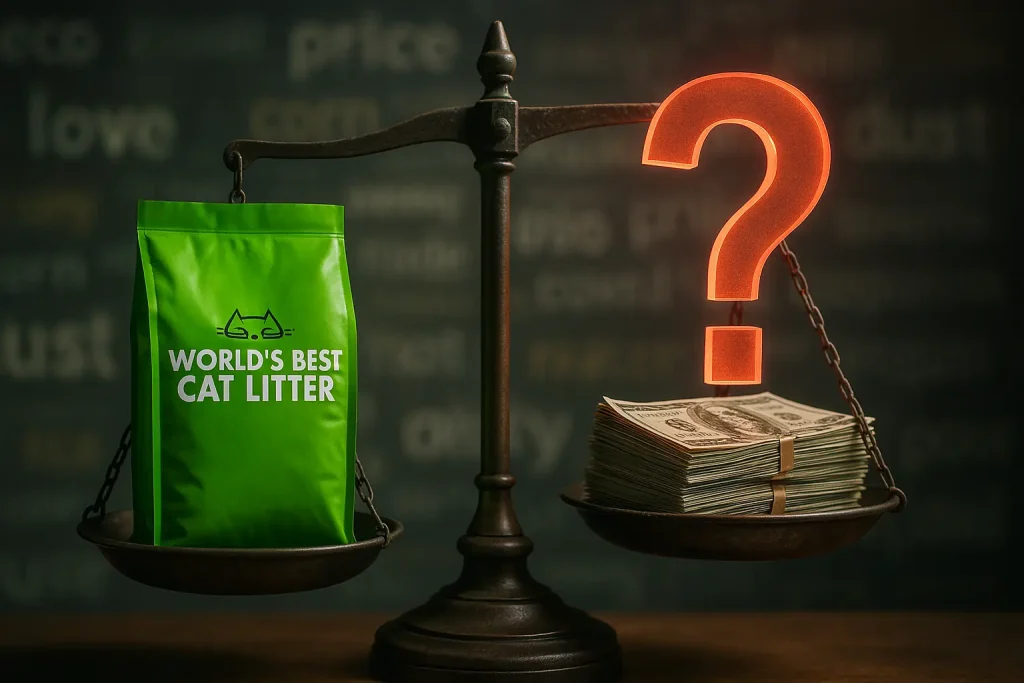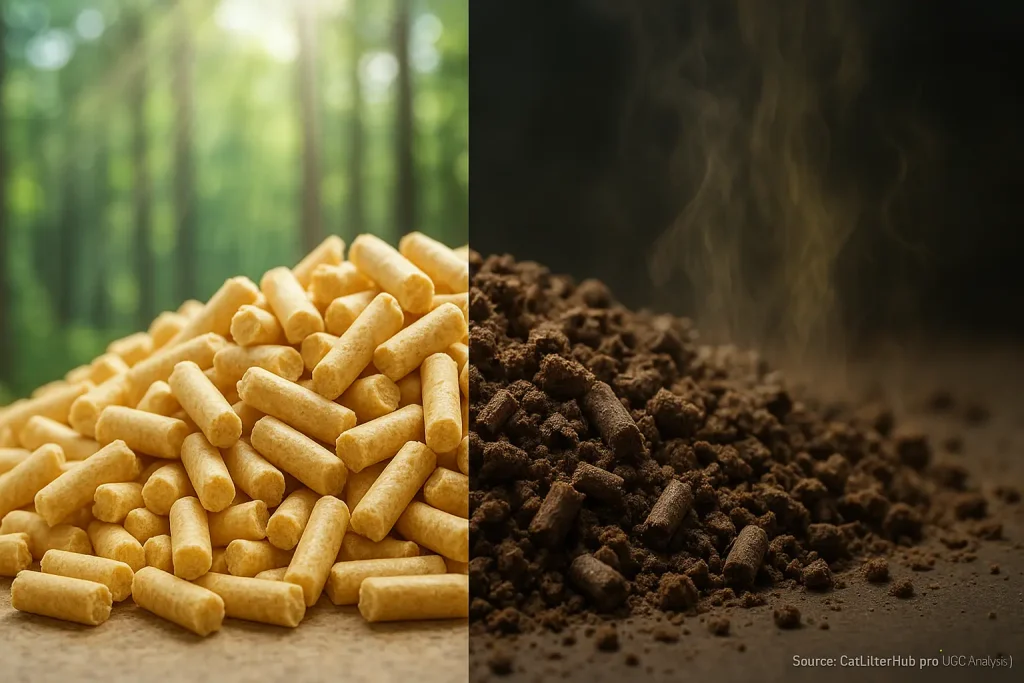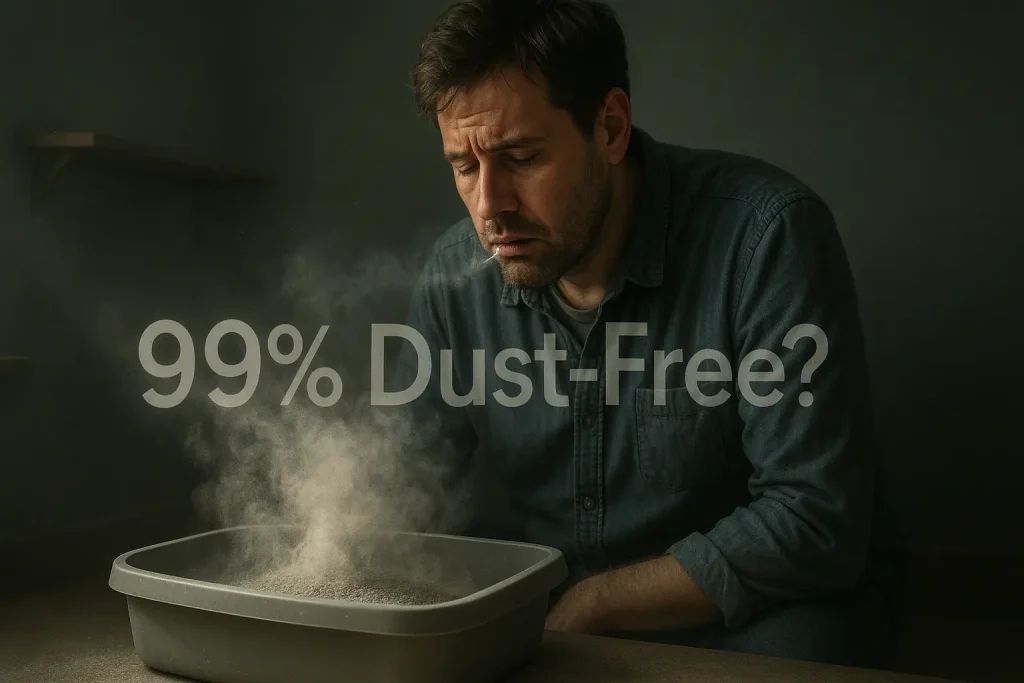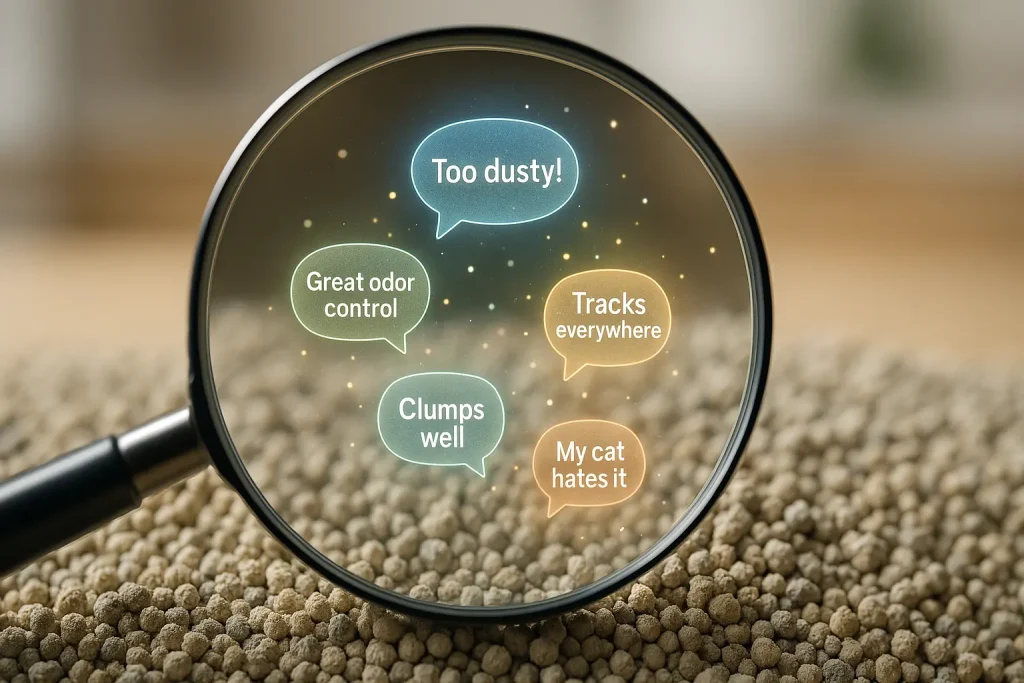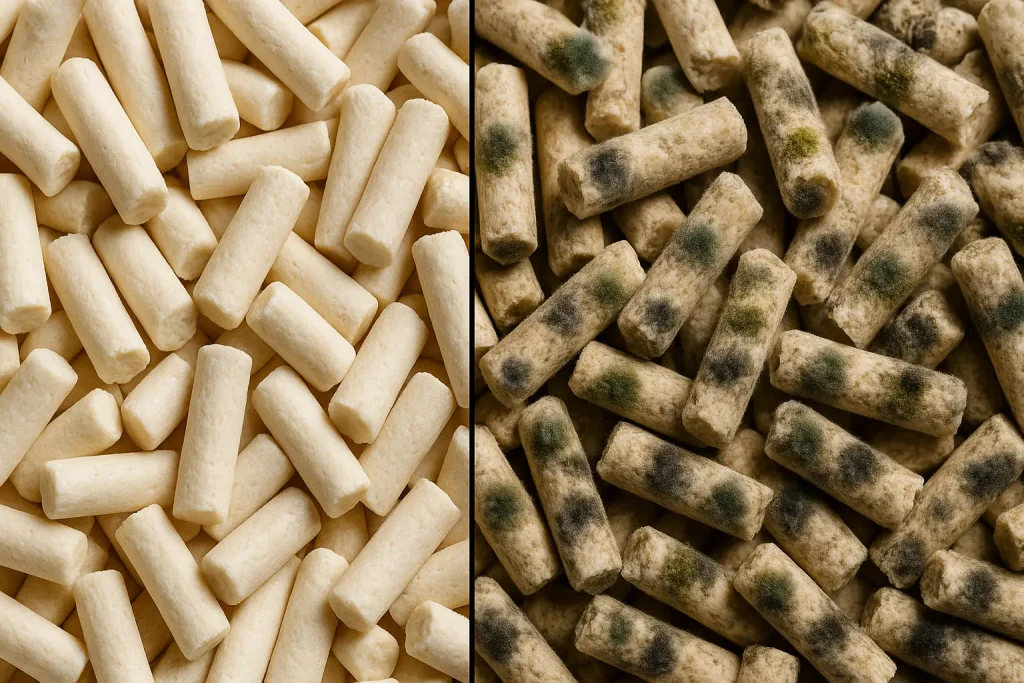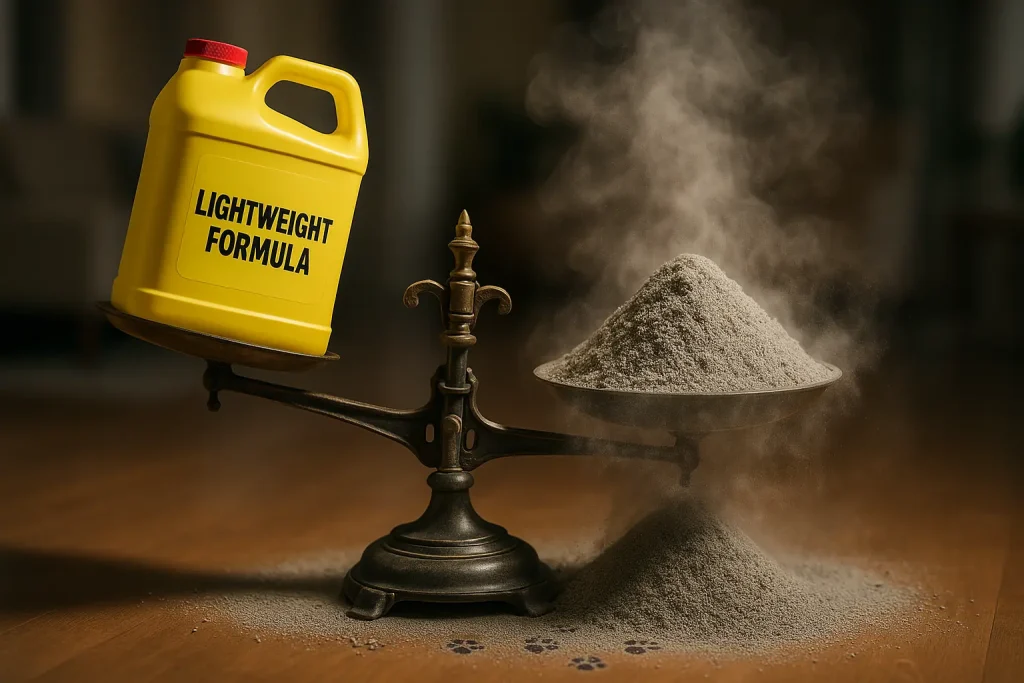The Litter Box Minefield: Navigating Myths & Marketing Hype
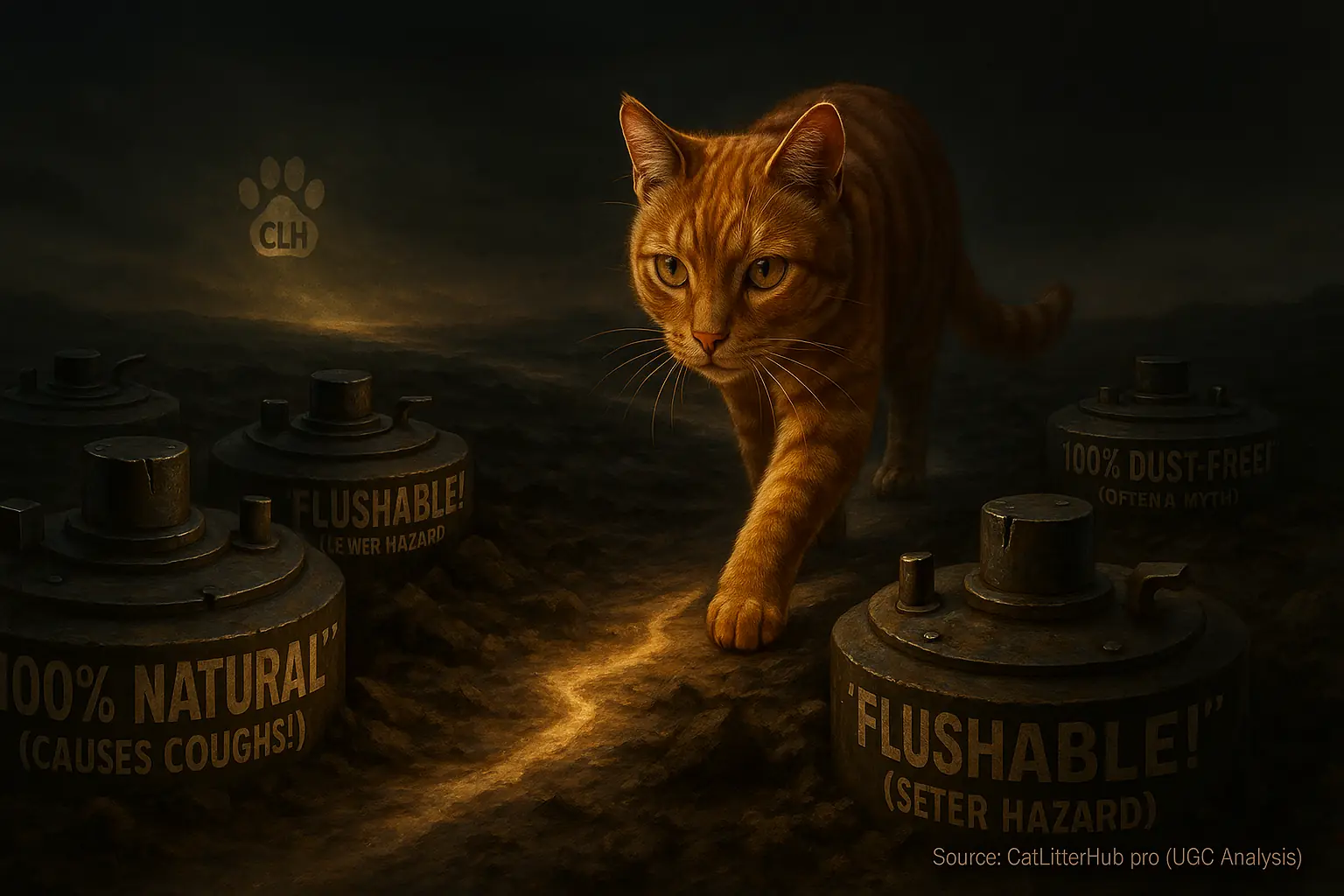
Choosing cat litter feels like a minefield. Promises. Pitfalls. You are not alone. Marketing claims often confuse conscientious cat owners. Labels shout 'dust-free' or 'perfect clumping.' Yet, real-world performance frequently disappoints. Many cat parents share this exact frustration, searching for answers.
That's where Cat Litter Hub steps in. We meticulously analyze thousands of genuine user experiences. These reviews reveal the unvarnished truth about cat litters. What thousands of cat owners have discovered is telling. '100% natural' does not always equal 'best for my cat.' Some owners report, "I bought natural, my cat hated it and even started coughing!" This page uses such collective wisdom. We aim to debunk common myths. We want to arm you with facts. You can navigate the litter aisle with confidence.
Test Your Litter IQ: Myth or Fact? (UGC-Backed Quiz)
Cat Litter Myth or Fact? Test Your Knowledge!
Question will load here...
How did you fare on the quiz? Many cat owners discover these quick checks reveal surprising assumptions. Often, what we think we know about litter comes from clever marketing. Not from the trenches of daily cat care. The collective voice of cat parents offers a truer picture. Cat Litter Hub meticulously analyzes this feedback. We believe real experiences trump hype. Always.
This quiz was a warm-up. Its goal? To get you thinking critically. Now, you can dive into the full story behind each of these litter beliefs. We present the detailed evidence from countless user reports next.
Myth #1: "Flushable" Cat Litter is Always Safe for Your Pipes & The Planet
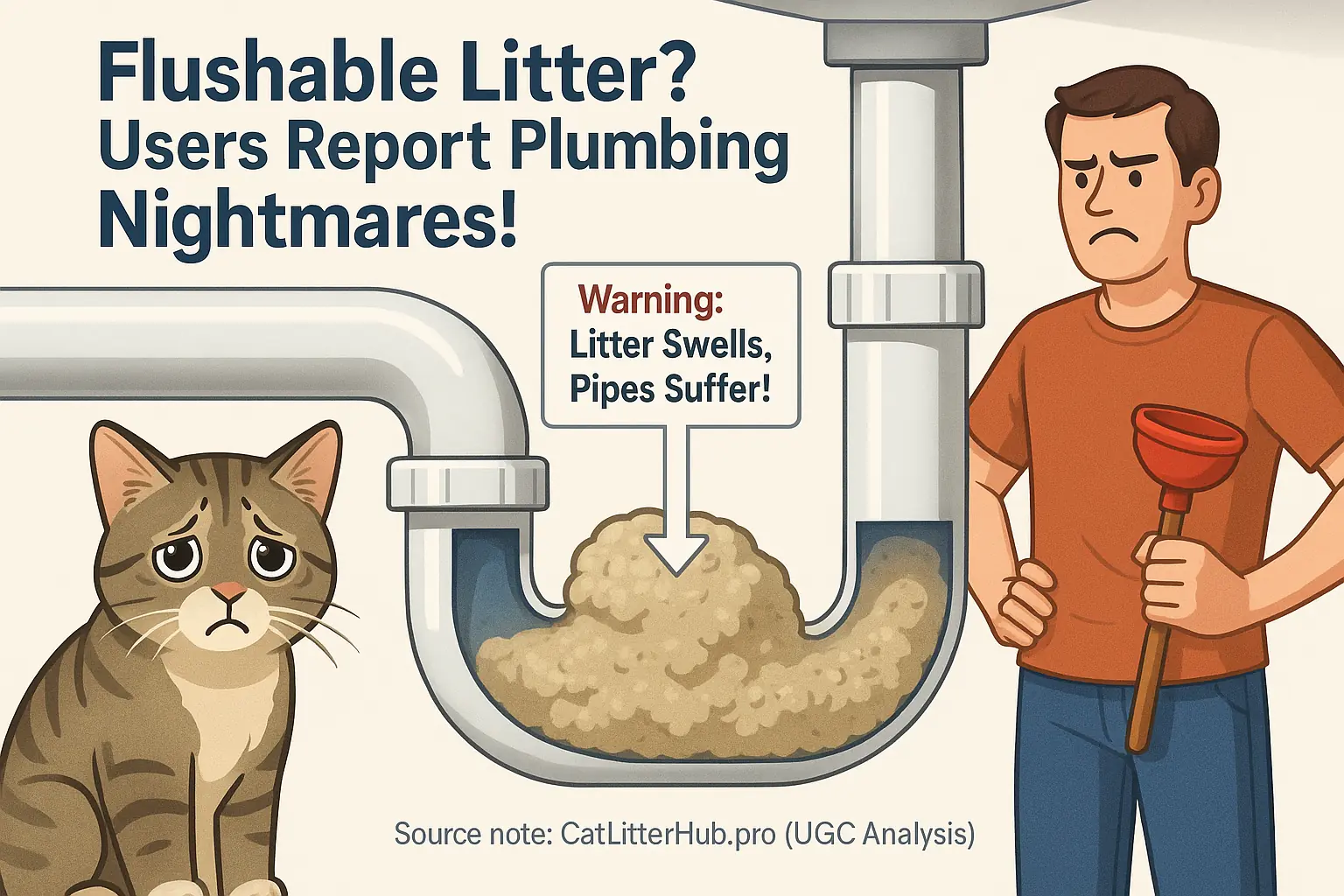
The dream for many? Scoop, flush, done. No more smelly trash bags by the bin. This convenience is a powerful lure for cat owners. But wait. Our analysis of extensive user feedback paints a starkly different picture. The 'flushable' claim frequently leads to significant problems.
User forums are filled with cautionary tales. Plumbers become frequent visitors for some, presenting hefty repair bills. Septic system backups are a reported disaster. Our synthesis of owner complaints reveals a common theme: many 'flushable' litters fail to disintegrate. Certain clay or dense plant-based products are frequent culprits. Users report these litters forming solid, clay-like plugs. In pipes. Beyond clogs, a serious environmental issue exists. Cat feces, as numerous health advisories confirm, can transmit Toxoplasma gondii. This parasite threatens aquatic ecosystems. Vulnerable human populations face risks too. Standard wastewater treatment processes may not eliminate this pathogen.
The mechanism behind these plumbing disasters is usually straightforward. Many popular clumping litters, even some marketed as flushable, use bentonite clay. Bentonite expands dramatically when wet. This creates strong clumps in the litter box. It creates pipe-blocking masses in your plumbing. User reports confirm this nightmare scenario repeatedly. Even some plant-based 'flushable' options, if not perfectly formulated, resist rapid disintegration in water.
The overwhelming consensus from cat owners who've faced plumbing bills? Avoid flushing. User horror stories paint a clear picture of expensive repairs. The potential for environmental contamination is another significant concern for many. Bagging used litter for regular trash disposal is the most consistently advised practice in user discussions. A segment of experienced owners suggests composting specific, truly biodegradable litters. This requires careful checking of local guidelines first. The user community's message: safer disposal protects your home. It protects our water.
Myth #2: "99% Dust-Free" Litter Means No More Sneezing Fits
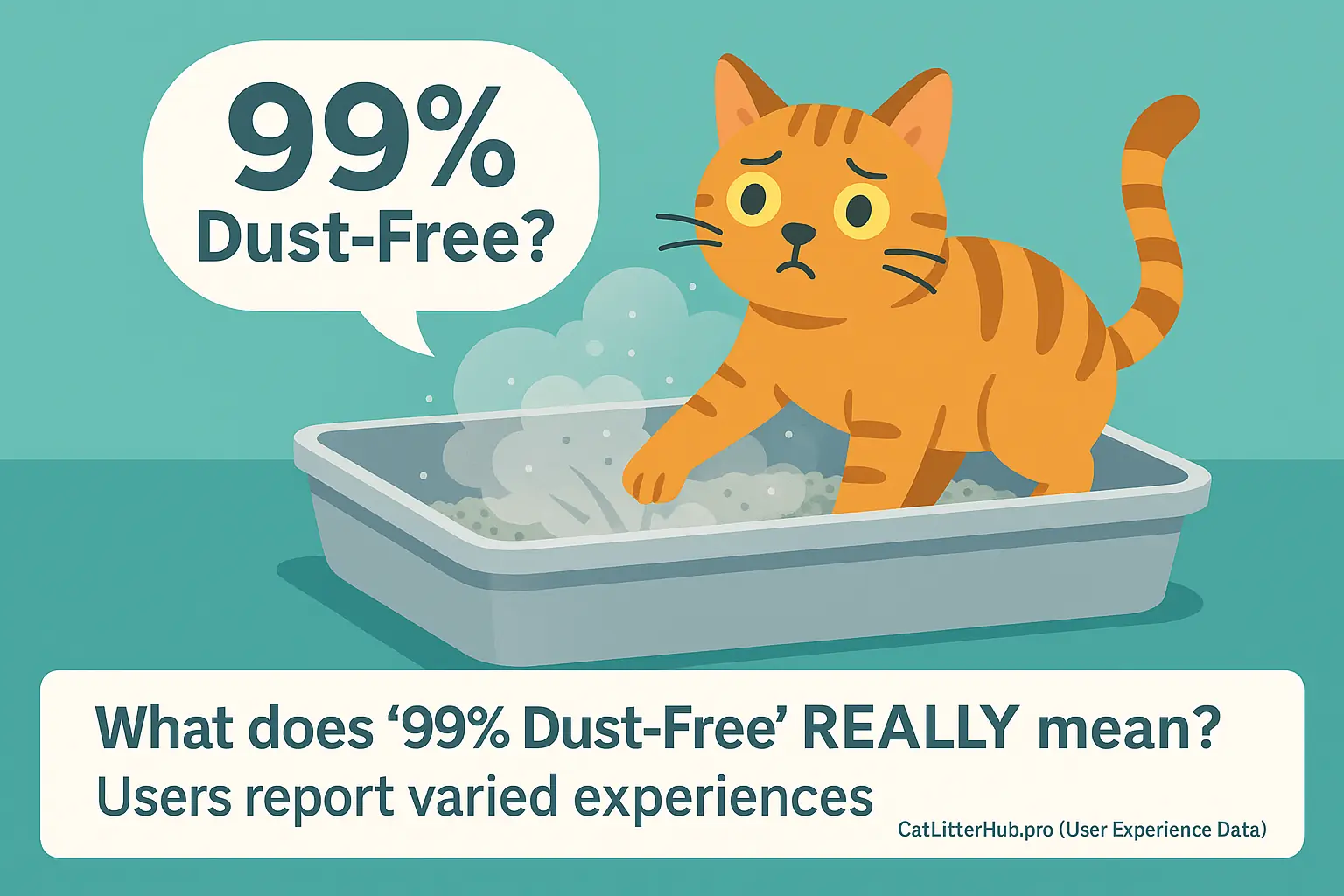
Ah, the lure of "99% dust-free" litter. It promises relief. A breath of fresh air, you think? Especially with sensitive lungs, human or feline. But then you pour the litter. Sometimes, a surprise cloud erupts. A mini dust storm appears. What gives?
User reports consistently show "99% dust-free" can still mean significant dust. Many cat owners describe a fine powder settling everywhere. This dust can trigger coughing. Pets and people suffer. That "99%" clearly isn't a universal experience. Part of the problem? No standard exists for measuring "dust-free." Is it dust at the factory? Dust when poured from the bag? Dust after your cat excavates? The labels offer few clues. The fine print on dust testing is often missing entirely.
Several factors explain this dust discrepancy. The type of clay used is one. Manufacturing processes vary widely. Even rough handling during shipping can create more fine particles. Completely eliminating these tiny particles presents a genuine challenge for producers. This reality often clashes with marketing claims.
So, what's the practical takeaway here? Some "low-dust" formulas genuinely perform better. Our analysis of user feedback identifies these. However, approach those "99% dust-free" promises with healthy skepticism. Your best information source? Actual user experiences with specific brands and batches. That's where the true story of dust levels unfolds.
Myth #3: "Natural" Litter is Always the Healthiest & Safest Choice
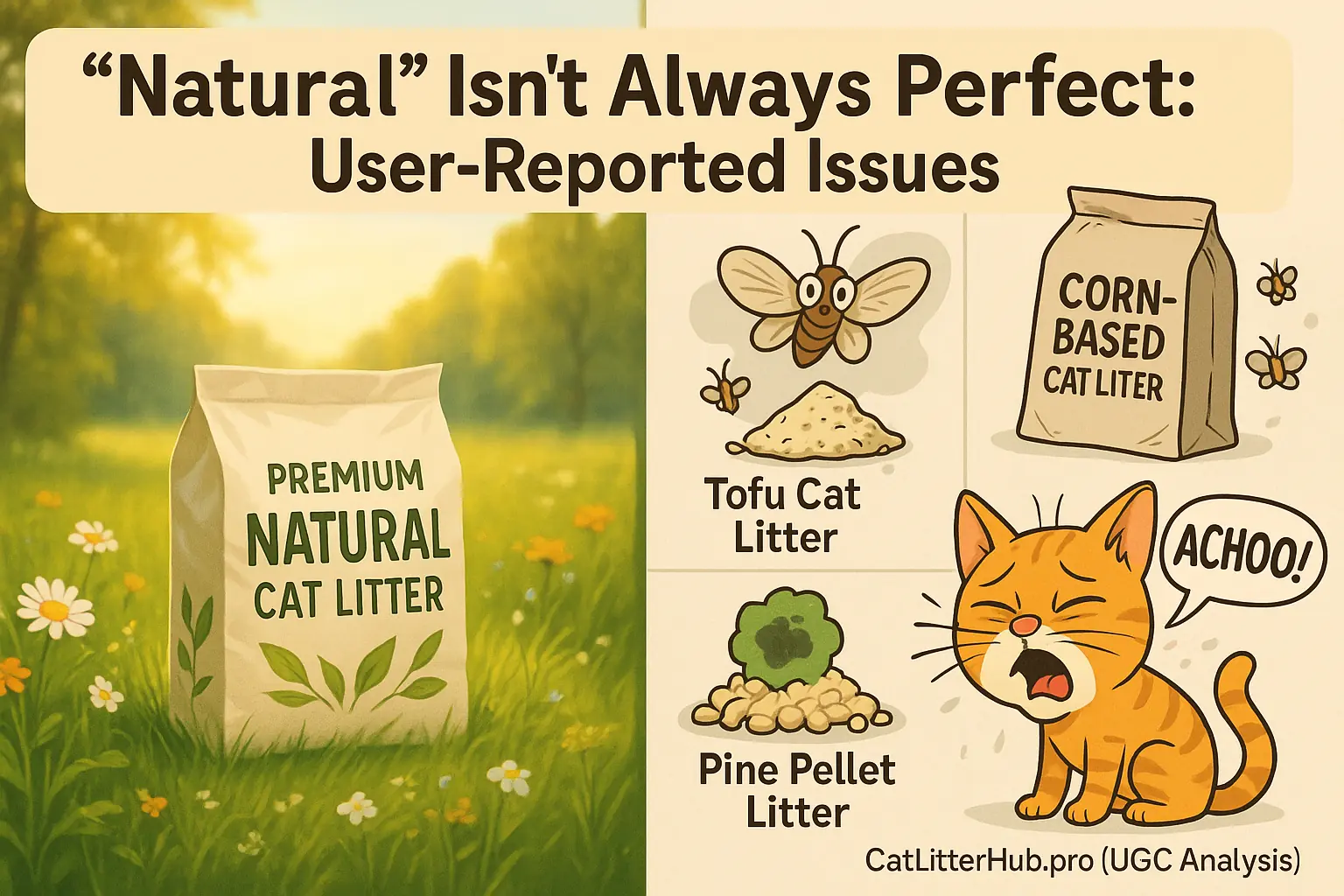
The "natural" label on cat litter appeals strongly to many owners. We all want the safest, healthiest options for our feline companions. But here's a truth many cat owners discover: "natural" does not automatically mean "problem-free." It certainly doesn't guarantee "safer" for every cat or home environment.
User experiences highlight potential pitfalls with some "natural" options. Imagine switching to a corn-based litter, only to find your kitchen invaded by pantry moths. This is a scenario reported by numerous cat owners; the litter itself becomes the source. Certain corn, wheat, or even tofu litters can also develop mold. This happens frequently in humid conditions or with improper storage, posing health risks. Allergies are another concern. Many owners share stories of cats developing sudden sneezing fits or skin irritation after a switch to pine or cedar litters. The culprit? Often, it's a sensitivity to natural wood oils or resins. And the dust? Sometimes, "natural" processing, or its absence, means higher levels of fine organic dust than some highly processed clay litters, a surprise for many users.
What the "natural" label doesn't tell you, but users do, is that "natural" is an incredibly broad term. The specific material truly matters. Corn litter presents different potential issues than wood litter. How a particular litter is processed, or indeed not processed, significantly impacts its characteristics and potential downsides. Your home's humidity level can also turn an otherwise acceptable natural litter into a problem. Some natural litters earn fantastic reviews from users. Others? Not so much, according to the collective voice of the community.
So, what's the key takeaway from synthesizing thousands of owner posts? Don't just assume "natural" on the bag means it's the ideal, risk-free choice for your cat. As one insightful owner put it, "I've learned that 'natural' is just a starting point." You still must research specific ingredients. You must read user reviews. This helps determine if a particular natural litter is genuinely a good, safe fit for your unique cat and home. Always dive into what real users say about that specific natural litter before you commit.
Myth #4: Scented Litter is The Best Way to a Fresh-Smelling Home
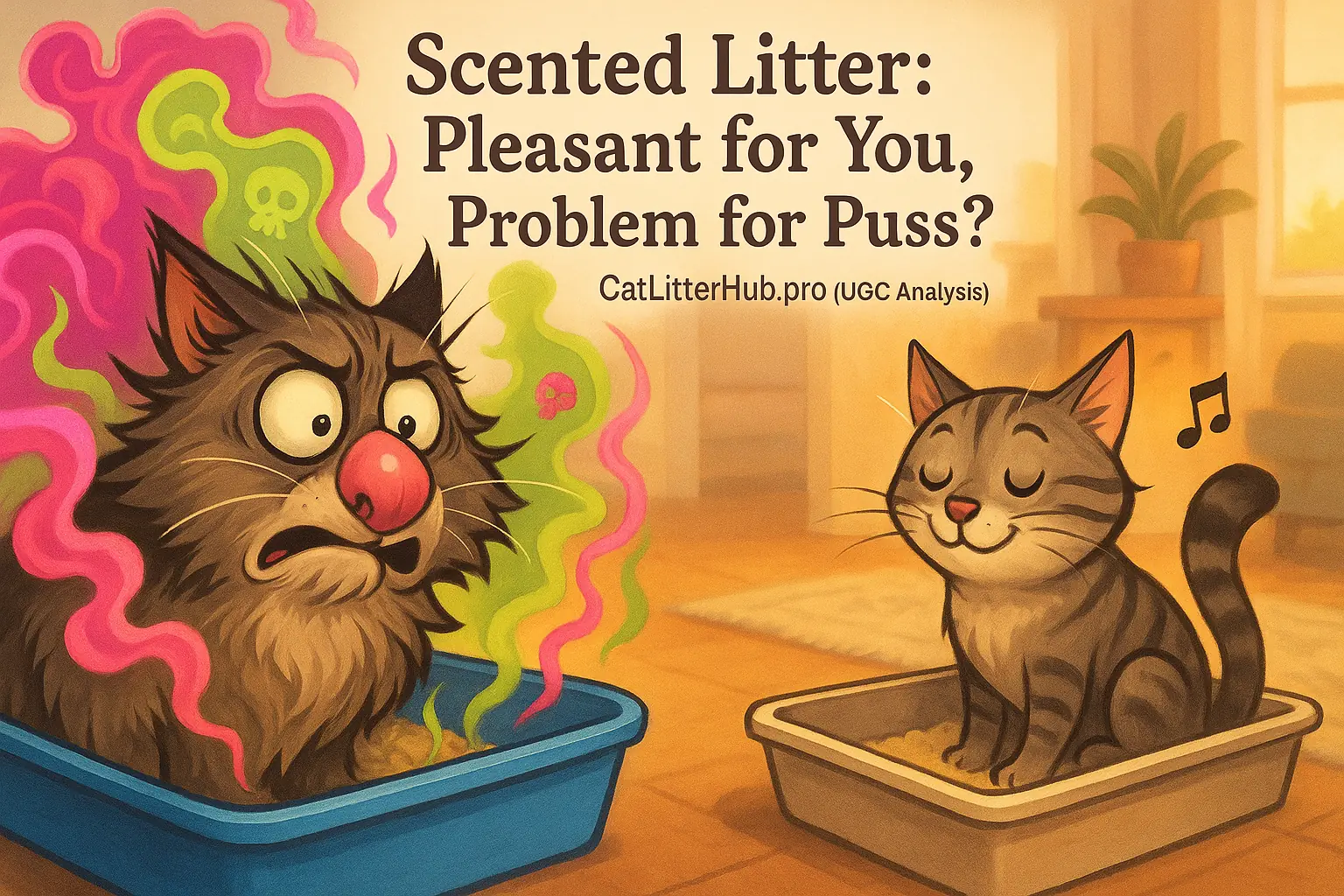
That lavender-meadow-fresh-spring-breeze scent wafts from the litter aisle. So tempting for us humans, right? We all want a home. A home that does not scream 'cat lives here'. But have you asked your cat? What do they think of that 'ocean fresh' perfume?
Turns out, many cats are not fans. Not at all. The community's experience is revealing. Countless user reports detail cats, previously perfect with habits, suddenly peeing on rugs. This often occurs the very day owners introduce a 'fresh linen' or 'ocean breeze' scented litter. Switching back to unscented frequently solves the problem instantly. Their sensitive noses can find those artificial perfumes overwhelming, even offensive. And here's the kicker, a truth echoed in many reviews: those strong scents often just mask underlying odors. They do not truly neutralize them. So, you might smell 'spring rain.' Your cat, however, might still endure a stinky box, now with an added layer of perfume they clearly despise.
What truly defeats odors, based on widespread user feedback? It is not more perfume. Cat owners repeatedly discover that the 'odor control' from some scented litters is just that – perfume. The base smell often lingers. Effective strategies involve rapid absorption. Strong clumping allows easy waste removal. Unscented litters, particularly those with activated charcoal or other natural neutralizers, earn consistent praise for actually eliminating smells. Plus, diligent scooping remains essential. No surprise there.
So, consider your cat's sensitive schnoz. Do this before you reach for that perfumed litter. The best-smelling home often comes from an unscented litter. A high-performance unscented litter. Good old-fashioned hygiene plays a huge part. Not a blast of artificial fragrance. This benefits both you and your cat.
Myth #5: Litter Attractants are a Magic Fix for Box Aversion
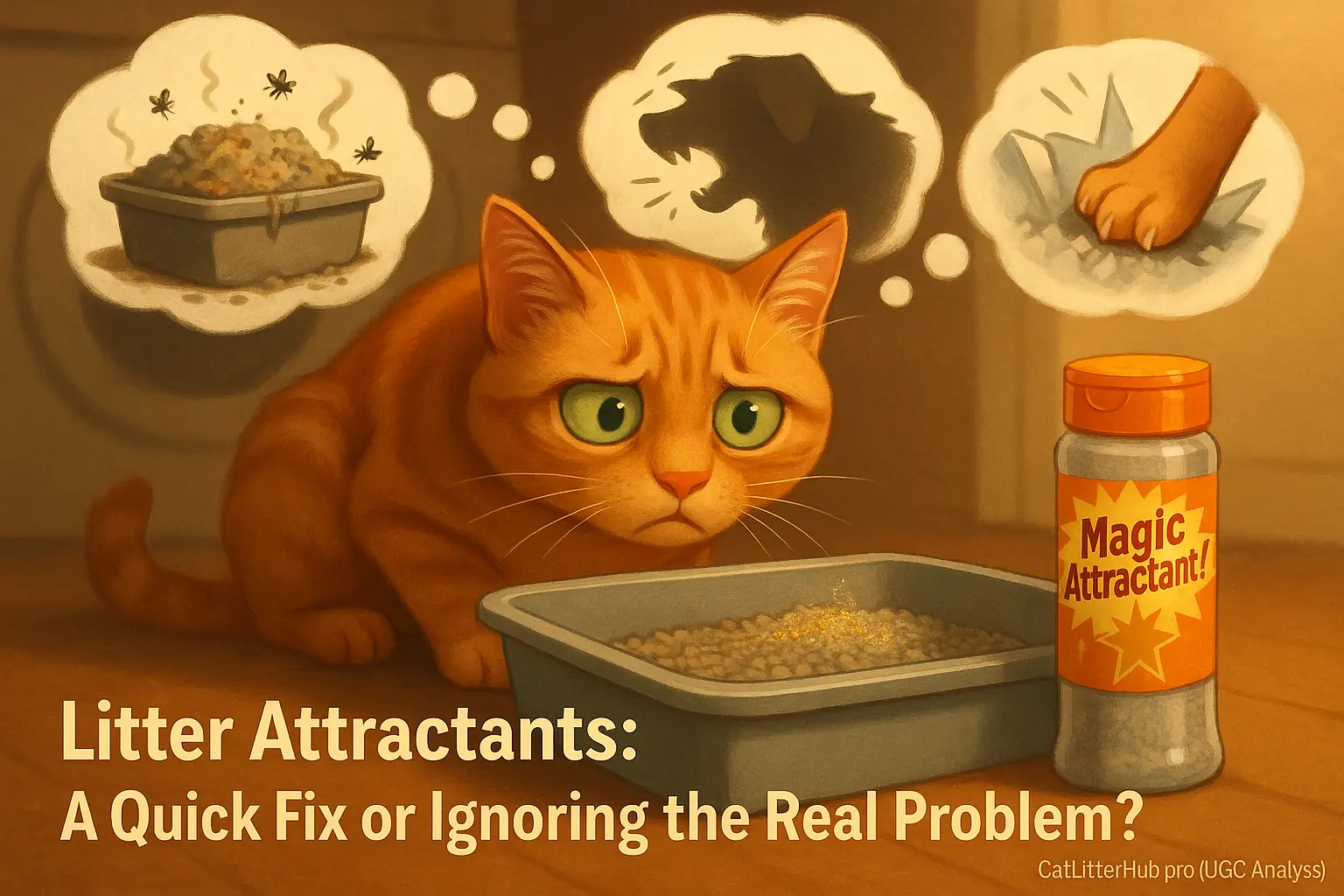
Cat suddenly avoiding the litter box? This situation creates intense stress. And right there on the pet store shelf is the promise: 'Litter Attractant - Guaranteed to bring Fluffy back!' Sounds like magic, right?
Well, user experiences paint a mixed picture. A big, lumpy mixed picture. Some owners report temporary curiosity. This happens especially with kittens or mild aversions. But many, many more find attractants do little. This is true if a deeper issue exists. Imagine this scenario, echoed in numerous user accounts: You try multiple attractant brands for box avoidance. Nothing seems to work. A vet visit then reveals an underlying bladder infection. The attractants, in many such user experiences, became a costly detour. They delayed actual help. What users often discover is the 'attractant' is just a specific herb. Or a particular scent. Catnip or certain grasses are common examples. Some cats respond. Many ignore them. This happens if the real problem is a dirty box. Or a painful UTI. Stress from a new pet also causes issues. Or a litter texture they despise.
Think of it this way. If your favorite restaurant suddenly served food you hated. And used dirty plates. In a loud, disruptive environment. Would a small sign saying 'Free Appetizer!' genuinely make you want to eat there? Probably not. It’s the same for cats. Attractants cannot fix an underlying problem. That problem makes the box unpleasant or even painful for your cat.
So, what's the user consensus? Play detective before buying attractants. Rule out medical issues with your vet. This step is paramount. Is the box absolutely spotless? Owners consistently report cleanliness is key. Is the litter type suddenly different? Cats notice these changes. Is there a new stressor in the house? Many seasoned cat parents find the best 'attractant' is simply a super clean box. A litter their cat genuinely likes is also crucial. And a prompt vet check becomes essential if problems suddenly start. Addressing the why behind the aversion is almost always more effective. It beats just sprinkling on some 'magic dust'.
The Real Scoop: Trust User Experience, Not Just Marketing Hype
So, what's the real scoop on cat litter? It's this. The collective wisdom of thousands of cat owners often tells a far more accurate story. Shiny packaging can deceive. Convincing ads might mislead. Our journey through user feedback has shown how common litter 'truths' are not always true. Real user experience offers clarity. It is the most reliable guide.
You're now armed with insights from real users. Powerful stuff. Use this knowledge! Question the marketing claims. Observe your own cat's preferences. And trust the patterns emerging from widespread, shared experiences. Imagine the relief: 'After reading what hundreds of other owners said, I finally understood why my 'miracle' litter wasn't working.' That understanding? It saved so much frustration and money for countless cat parents. This is the power of shared community knowledge.
Ready to dive deeper? Explore our detailed analyses of litter types. Discover actual brand realities. Find user-approved solutions to persistent problems. Cat Litter Hub has done the intensive digging through mountains of User Generated Content. So you don't have to! Your informed choice starts here.
Related Insight: Myth: Cats Instinctively Cover Poop in ANY Litter. (UGC on Texture Aversion & Non-Covering)
Many cat owners firmly believe their cats will always cover their waste. It's often seen as a fundamental feline instinct. Yet, our analysis of extensive user-generated content reveals a common problem. Some cats consistently refuse to bury their poop.
Why does this happen? Cat owner experiences shared online strongly suggest litter texture aversion plays a significant role. Certain litter materials can feel unpleasant to sensitive paws, discouraging digging. We are further investigating this 'instinctive covering' behavior and how frequently it's overridden by a cat's dislike for a specific texture.

